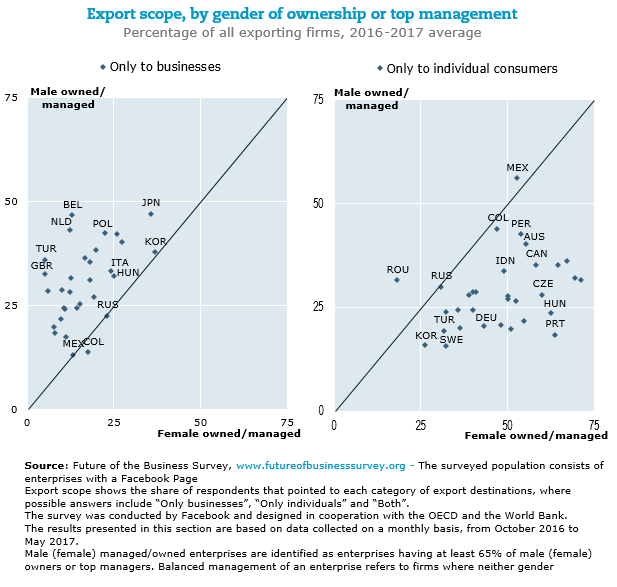Digitalisation facilitates trade, but participation and patterns still differ for male and female entrepreneurs
March 2018 - Today, small businesses have a menu of digital tools that allow them to leverage global connections and market directly to potential customers all over the world. Thereby they can overcome barriers to trade which typically weigh more heavily on smaller firms with smaller economies of scale.
Still, gender gaps persist also for businesses with a digital presence, a segment of the business population that is aware of the benefits of a modern approach to the entrepreneurial activity. Not only are there more male- than female-run businesses involved in international trade (OECD Entrepreneurship at a Glance 2017), but there are also gender differences in the patterns of trade, with significant shares of male entrepreneurs exporting only to businesses and high shares of female entrepreneurs exporting only to individual consumers. This reflects the traditional polarisation in the activity sector of male and female entrepreneurs respectively, e.g. in the manufacturing sector the incidence of male-run businesses is higher than that of female-run firms, while the opposite holds for the personal services sector.
Further reading
- OECD (2017), Entrepreneurship at a Glance 2017, OECD Publishing, Paris.
- Facebook, OECD, and The World Bank, Future of the Business Survey
Related Documents


